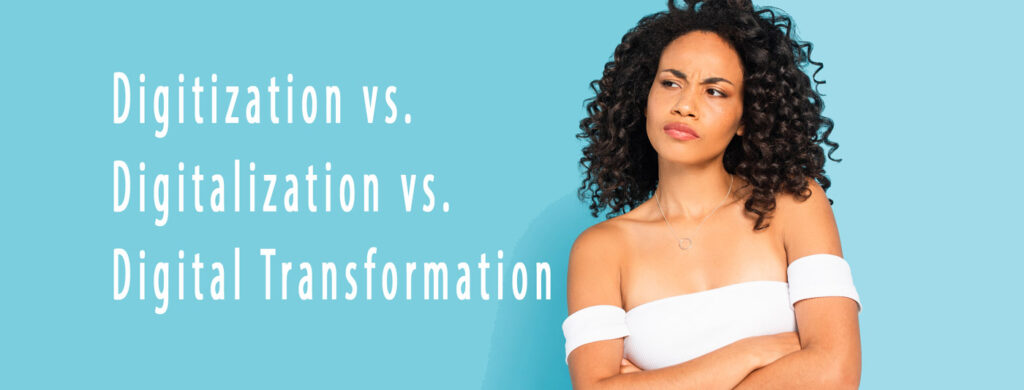
Since several years now, you hear these buzz terms related to digital. Some use the term digitization, or digitalization, and others aim higher for digital transformation because it sounds pretty cool and sophisticated.
Yet these terms created quite some confusion. Accuracy in communication is one of the most critical communication skills, so let’s shed some light on the difference between those terms.
(taken from the original article by Mark Sen Gupta)
Let’s start with the term digitization. Digitization refers to creating a digital representation of physical objects or attributes. For instance, we scan a paper document and save it as a digital document (e.g., PDF). In other words, digitization is about converting something non-digital into a digital representation or artifact. Computerized systems can then use it for various use cases. An example from manufacturing would be when a measurement is converted from a manual or mechanical reading to an electronic one.
Digitization is foundational. This is the connection between the physical world and software. This is what we been doing since the 1960s. It is an enabler for all the processes that provide business value because of the need for consumable data.
Digitalization refers to enabling or improving processes by leveraging digital technologies and digitized data. Therefore, digitalization presumes digitization. Examples of this could be as simple as PLC logic or PID control in a microprocessor-based system, sequenced logic for a batch process, automated shutdown logic, etc. It could also be something more complex, like an error in a transmitter generating a work order in the ERP maintenance system for a maintenance tech.
Digitalization increases productivity and efficiency while reducing costs. Digitalization improves an existing business process or processes but doesn’t change or transform them. That is to say, it takes a process from a human-driven event or series of events to software-driven.
Digital Transformation is really business transformation enabled by digitalization. The “digital” moniker is a little bit of a misnomer because the essence of digital transformation is the changing of business processes enabled or forced by digitalization technologies.
One example of this is the convergence of IT/OT where the intersection and overlap of IT skills within the OT domain has created the need for a more uniform governance due to cybersecurity concerns, data flow requirements, and skills. Another example of digital transformation is a shift from local control of physical processes to remote monitoring and control of those same processes. A more ambitious example would be the integration of your customer sales volumes feeding though to your company’s raw material vendors, thus integrating the supply chain for greater efficiency and response.
To summarize:
- Digitization refers to creating a digital representation of physical objects or attributes.
- Digitalization refers to enabling or improving processes by leveraging digital technologies and digitized data.
- Digital Transformation is really business transformation enabled by digitalization.
